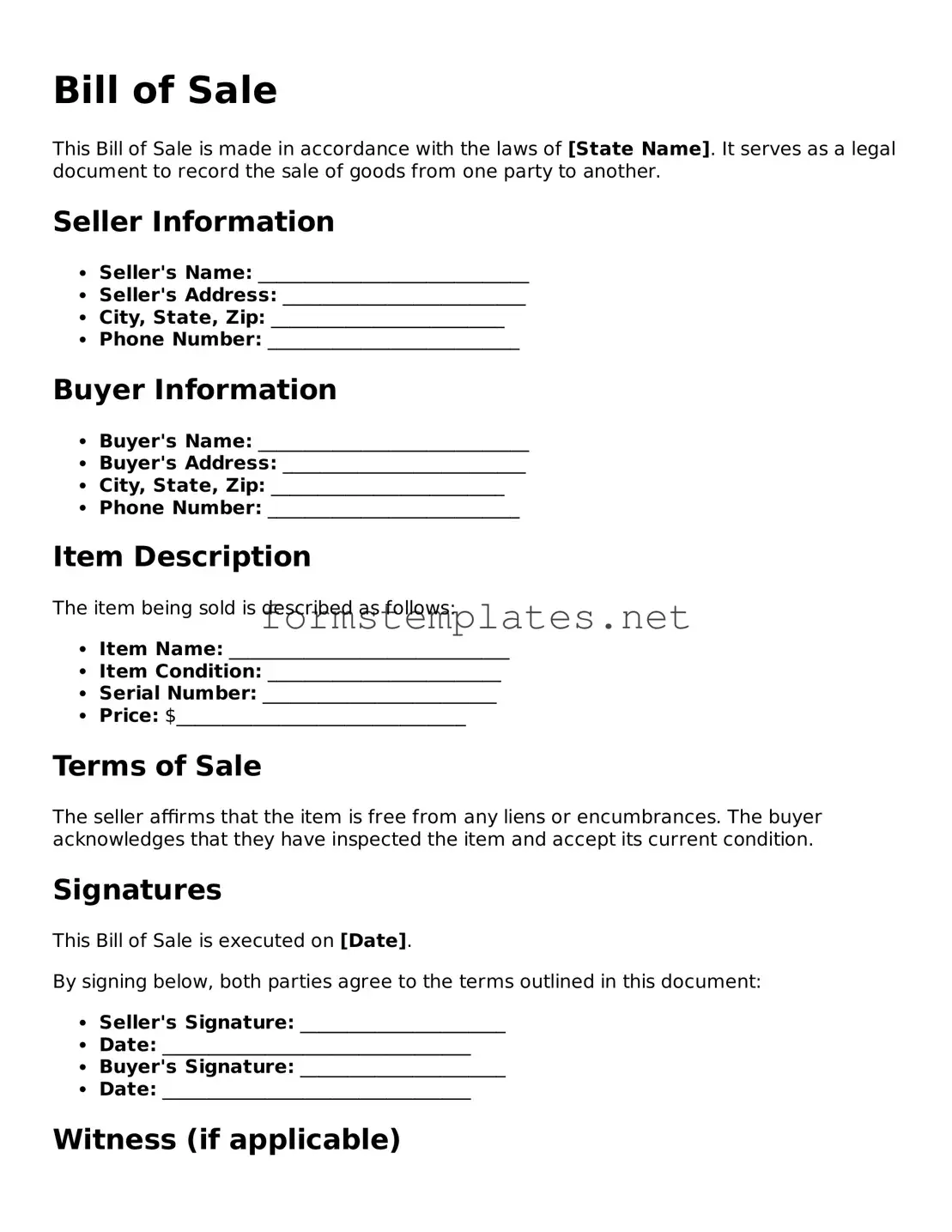What is a Bill of Sale?
A Bill of Sale is a legal document that records the transfer of ownership of personal property from one party to another. It serves as proof of the transaction and outlines the details of the sale, including the items being sold, the purchase price, and the date of the transaction. This document is particularly important for significant assets, such as vehicles, boats, and equipment.
Why is a Bill of Sale important?
A Bill of Sale is important for several reasons:
-
It provides a written record of the transaction, which can help resolve disputes.
-
It establishes the terms of the sale, including any warranties or conditions agreed upon by both parties.
-
It may be required for registration or titling purposes, especially for vehicles and other regulated items.
-
It protects both the buyer and the seller by documenting the details of the sale.
A comprehensive Bill of Sale should include the following information:
-
The names and addresses of both the buyer and the seller.
-
A description of the item being sold, including any identifying numbers or characteristics.
-
The purchase price and payment method.
-
The date of the transaction.
-
Any warranties or guarantees provided by the seller.
Do I need a Bill of Sale for every transaction?
While a Bill of Sale is not legally required for every transaction, it is highly recommended for significant purchases. For items like vehicles, many states require a Bill of Sale for registration purposes. Even for smaller transactions, having a written record can help protect both parties and clarify the terms of the sale.
Can a Bill of Sale be handwritten?
Yes, a Bill of Sale can be handwritten as long as it includes all necessary information and is signed by both parties. However, using a standardized form can help ensure that all relevant details are covered and can make the document easier to understand and enforce.
Is a Bill of Sale legally binding?
A Bill of Sale is generally considered a legally binding contract, provided that it includes the essential elements of a contract: offer, acceptance, and consideration. Both parties must agree to the terms, and the document should be signed by both the buyer and the seller to demonstrate their consent.
What if there are disputes after the sale?
If disputes arise after the sale, the Bill of Sale can serve as key evidence in resolving the issue. It can clarify the terms agreed upon by both parties and provide a basis for any claims made. In some cases, mediation or legal action may be necessary if the dispute cannot be resolved amicably.
Bill of Sale forms can be obtained from various sources. Many office supply stores sell generic forms. Additionally, online resources offer customizable templates that can be tailored to specific transactions. It is important to ensure that the form complies with local laws and includes all necessary information for the specific type of sale.
